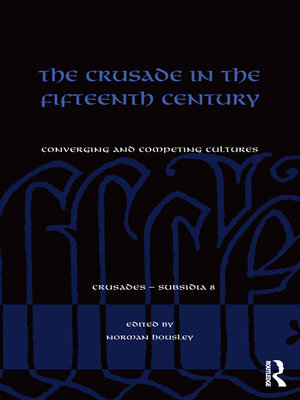The Crusade in the Fifteenth Century
ebook ∣ Converging and competing cultures · Crusades--Subsidia
By Norman Housley

Sign up to save your library
With an OverDrive account, you can save your favorite libraries for at-a-glance information about availability. Find out more about OverDrive accounts.
Find this title in Libby, the library reading app by OverDrive.



Search for a digital library with this title
Title found at these libraries:
| Library Name | Distance |
|---|---|
| Loading... |
Increasingly, historians acknowledge the significance of crusading activity in the fifteenth century, and they have started to explore the different ways in which it shaped contemporary European society. Just as important, however, was the range of interactions which took place between the three faith communities which were most affected by crusade, namely the Catholic and Orthodox worlds, and the adherents of Islam. Discussion of these interactions forms the theme of this book. Two essays consider the impact of the fall of Constantinople in 1453 on the conquering Ottomans and the conquered Byzantines. The next group of essays reviews different aspects of the crusading response to the Turks, ranging from Emperor Sigismund to Papal legates. The third set of contributions considers diplomatic and cultural interactions between Islam and Christianity, including attempts made to forge alliances of Christian and Muslim powers against the Ottomans. Last, a set of essays looks at what was arguably the most complex region of all for inter-faith relations, the Balkans, exploring the influence of crusading ideas in the eastern Adriatic, Bosnia and Romania. Viewed overall, this collection of essays makes a powerful contribution to breaking down the old and discredited view of monolithic and mutually exclusive "fortresses of faith". Nobody would question the extent and intensity of religious violence in fifteenth-century Europe, but this volume demonstrates that it was played out within a setting of turbulent diversity. Religious and ethnic identities were volatile, allegiances negotiable, and diplomacy, ideological exchange and human contact were constantly in operation between the period's major religious groupings.







